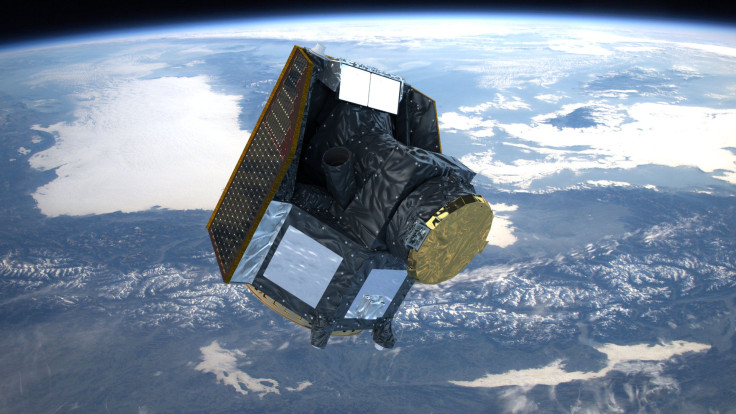'No Known Equivalent': 'Unique' Exoplanet Photobombs Cheops Satellite Observation
KEY POINTS
- Researchers were studying two exoplanets when they spotted a third one
- The planet has a long orbit of more than100 days
- The chances of seeing such exoplanet transits are said to be "incredibly low"
Scientists were studying a star system when a planet unexpectedly photobombed their observation. The surprise appearance helped the researchers characterize the unique planet that had "no known equivalent."
While we're familiar with photobombed photos of our friends or even ourselves, it can also actually happen in space. In 2020, for instance, a meteor fireball event was photobombed by Starlink satellites.
However, in the case of the new study, published in the journal Nature Astronomy, the photobombing incident didn't just lead to an amusing photo. Instead, it helped the research team learn more about a rather special exoplanet.
The European Space Agency's (ESA) CHaracterising ExOplanet Satellite (Cheops) was observing a sun-like star called Nu2 Lupi, which lies 50 lightyears away in the constellation Lupus, the ESA said in a news release Monday. This star is visible to the naked eye. In 2019, scientists discovered that Nu2Lupi had three exoplanets (b,c and d) orbiting it, prompting a follow-up observation using the Cheops.
In this system, planets b and c have orbits lasting 11.6 and 27.6 days respectively, but planet d has an orbit of 107.6 days. Because of planet d's much longer orbit, the chances of seeing it in a planetary transit are said to be "incredibly low."
However, while observing planets b and c in transit across the star's light, planet d also made a surprise appearance.
"We knew that already for the two inner planets, which led us to point CHEOPS to the system in the first place. However, the third planet is quite far away from the star, no one was expected to see its transit!" study co-author Yann Alibert, of the University of Bern, said in a news release.
This not only marks one of the first results from Cheops, but it is also said to be the first time that an exoplanet with an orbit of more than 100 days has been spotted transiting a star that's visible to the naked eye, the ESA said.
The discovery is one of the first results from @esascience #Cheops, and the first time an exoplanet with a period of over 100 days has been spotted transiting a star that is bright enough to be visible to the naked eye! pic.twitter.com/STANTjaUkn
— ESA CHEOPS – Characterising Exoplanet Satellite (@ESA_CHEOPS) June 28, 2021
Planetary transits are excellent opportunities to get a better understanding of exoplanets, the agency said. The observation allowed the researchers to determine the property of the planets.
"We refine the properties of all three planets: planet b probably has a rocky mostly dry composition, while planets c and d seem to have retained small hydrogen – helium envelopes and a possibly large water fraction," the researchers wrote.
In fact, planets c and d have more water than Earth, although they are not present in liquid form but in the form of "high-pressure ice or high-temperature steam." Observations also determined that planet d, or nu2 Lupi d, is about 2.5 times the size of the Earth and 8.8 times its mass.
"While none of these planets would be habitable, their diversity makes the system even more exciting, and a great future prospect for testing how these bodies form and change over time," ESA Cheops project scientist Kate Isaak said.
Since most long-period transiting exoplanets are too far away and therefore too faint to observe in follow-ups, nu2 Lupi presents a rather special opportunity for the scientists because it's close enough and bright enough for further observations.
"Since its bright host star is quite close to us, it is easier to study. This makes it a golden target for future study with no known equivalent," said study co-author David Ehrenreich, of the University of Geneva and mission scientist of Cheops.
The next step now is to study the planets using more powerful instruments such as the Hubble Space Telescope or the upcoming James Webb Telescope.

© Copyright IBTimes 2024. All rights reserved.






















